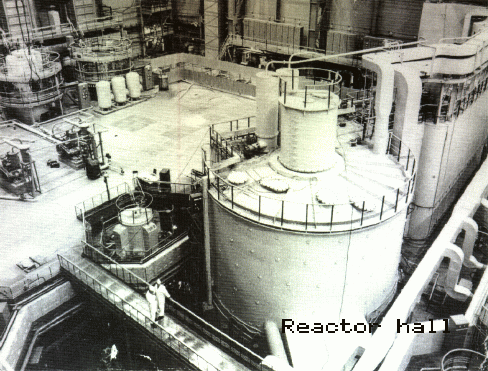My recent posts have been about breeder reactors which generate more fissile material than they consume. There is renewed global interest in breeder reactors for the production of nuclear fuel and the destruction of nuclear waste. Today's post is the first in a series about the history and current status of breeder reactors in the Soviet Union and Russia.
The Soviet Union established a fast breeder reactor program at the end of 1949 at the Institute of Physics and Power Engineering (IPPE). They lacked important technical information about reactor design, core design, cooling systems, damage of components from irradiation and coolant system designs. Coming just after the destruction of World War II, the program faced serious shortages of materials, components and educated staff.
The fast critical assembly Bystry Reactor 1(BR1) was started up in 1955 at the IPPE fueled with metallic plutonium without a coolant system. It was able to produce eighty percent more fuel than it burned and was excellent proof of the fast breeding concept. The next test reactor, the BR2, was designed with mercury as a coolant. This test revealed that the plutonium metal fuel was not stable under irradiation and the mercury leaked badly. Eventually, the BR5 went into operation in 1959 with liquid sodium and plutonium oxide fuel. The BR5 was used to produce medical isotopes and also provided neutrons beams for medical treatment. It continued to operate until 2004.
In 1961, the IPPE put the BFS-1 into operation. This test reactor allowed the simulation of fast breeder reactors with different ratios of uranium to plutonium in the fuel. The BFS-1 was also able to test different fuel rod and control rod configurations. A BFS-2 was turned on in the late 1960 to allow the simulation of larger cores.
The BOR-60 test reactor was built and began operation in 1969 at the Institute of Atomic Reactors at Dimitrovgrad to test something called vibro-packed fuel. To create this fuel, granulated oxides of uranium and plutonium are agitated in container with uranium powder.
While the BP5 was being finished, design work began on the BN-50 which eventually was called BN-350 based on its electrical output. The BN-350 began construction in 1964 on the Mangyshlak peninsula on the Caspian Sea. It was finished in 1972 and turned on. It was tested with enriched uranium fuel and mixed uranium and plutonium oxide fuels referred to as MOX. In addition to generating electricity, the BN-350 was also used to desalinate seawater.
In 1973, there was a major sodium fire at the BN-350 caused by the failure of a steam generator. There had not been enough testing and design work on the steam generators used with the BN-350 reactor and there was not sufficient quality control on the welding in the generators. After repairs, the reactor continued to operate until 1999.
BN-350 Soviet Reactor:
